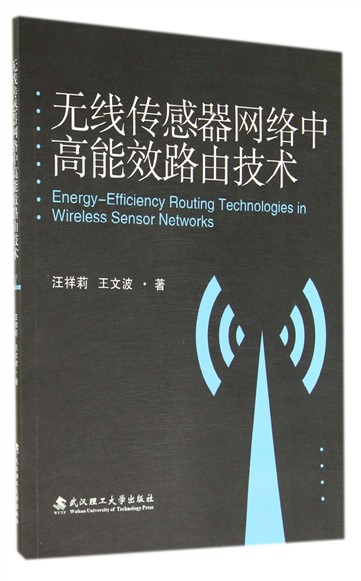 [内容简介]
[内容简介]
contains the authors research results on energy—efficient routing technologies in wireless sensor work, and its main content includes the following: clustering heterogeneous work routing algorithm based on mixed integer programming; adaptive aggregation routing and data fusion algorithms in wireless sensor works; the lowest energy consumption routing algorithm,'the energy balancing and lowest energy—con— sumption routing algorithm, and the lcast delay and low energy—consumption routing algOfithm on the basis of dynamic programming method.
[目录]
Chapter 1 Introduction of Wireless Sensor Networks
1.1 Basic concepts of wireless sensor works
1.2 Applications of WSNs
1.3 Research contents of WSNs
1.4 Performance evaluation index in WSN
References
Chapter 2 Routing Problems in Wireless Sensor Networks
2.1 Design constraints for routing in WSNs
2.2 Classification of routing protocols for WSNs
2.3 Analysis and parison of typical routing protocols in WSNs
2.4 Energy consumption characteristics and model analysis of sensor node
2.5 Key technologies of building energy-efficient routing in WSNs
References
Chapter 3 Optimal Clustering Routing Algorithm for Wireless Sensor Networks with Small-world Property
3.1 Introduction of plex works
3.2 Models of plex works
3.3 Optimal clustering routing algorithm for wireless sensor works with small-world property
References
Chapter 4 Adaptive Aggregation Routing and Data Fusion Algorithms in Wireless Sensor Networks
4.1 Introduction of aggregation routing
4.2 An adaptive aggregation routing algorithm in WSNs
4.3 An energy balance mobile agent routing algorithm based on ant colony optimization in WSNs
4.4 De-noising preprocessing before data fusion in WSNs
4.5 Data fusion algorithm of wireless multimedia sensor work based on nonsubsam-pled pyramid and bidimensional empirical deposition
References
Chapter 5 Efficient Energy Routing Algorithm Based on Dynamic Programming in Wireless Sensor Networks
5.1 Basic concepts of dynamic programming method
5.2 Establishment of standard dynamic programming model for WSNs
5.3 LECR based on dynamic programming
5.4 EB~LECR based on dynamic programming
5.5 LD-LECR based on the dynamic programming
5.6 Simulation and analysis
5.7 Conclusion
References
Chapter 6 Summary and Outlook
6.1 Research work summary
6.2 The next research work

 新书报道
新书报道